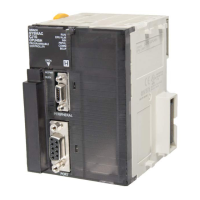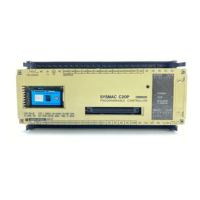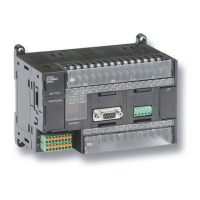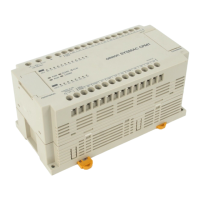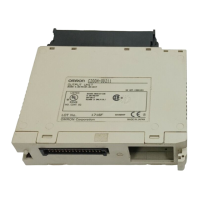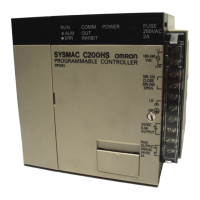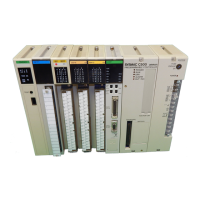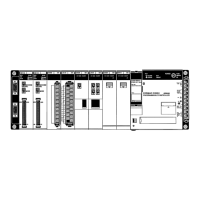63
Checking Programs Section 2-3
2-3 Checking Programs
CS/CJ-series programs can be checked at the following stages.
• Input check during Programming Console input operations
• Program check by CX-Programmer
• Instruction check during execution
• Fatal error check (program errors) during execution
2-3-1 Errors during Programming Device Input
Programming Console
Errors at the following points will be displayed on the Programming Console
during input.
CX-Programmer
The program will be automatically checked by the CX-Programmer at the fol-
lowing times.
The results of checking are output to the text tab of the Output Window. Also,
the left bus bar of illegal program sections will be displayed in red in ladder
view.
2-3-2 Program Checks with the CX-Programmer
The errors that are detected by the program check provided by the CX-Pro-
grammer are listed in the following table.
The CX-Programmer does not check range errors for indirectly addressed
operands in instructions. Indirect addressing errors will be detected in the pro-
gram execution check and the ER Flag will turn ON, as described in the next
section. Refer to the CS/CJ-series Programmable Controllers Programming
Manual (W340) for details.
When the program is checked on the CX-Programmer, the operator can spec-
ify program check levels A, B, and C (in order of the seriousness of the error),
as well as a custom check level.
Error display Cause
CHK MEM Pin 1 on the DIP switch on the CPU Unit is set to ON (write-protect).
IO No. ERR An illegal I/O input has been attempted.
Timing Checked contents
When inputting
ladder diagrams
Instruction inputs, operand inputs, programming patterns
When loading
files
All operands for all instructions and all programming patterns
When download-
ing files
Models supported by the CS/CJ Series and all operands for all
instructions
During online
editing
Capacity, etc.
Area Check
Illegal data: Ladder
diagramming
Instruction locations
I/O lines
Connections
Instruction and operation completeness
Instruction support
by PLC
Instructions and operands supported by PLC
Instruction variations (NOT, !, @, and %)
Object code integrity

